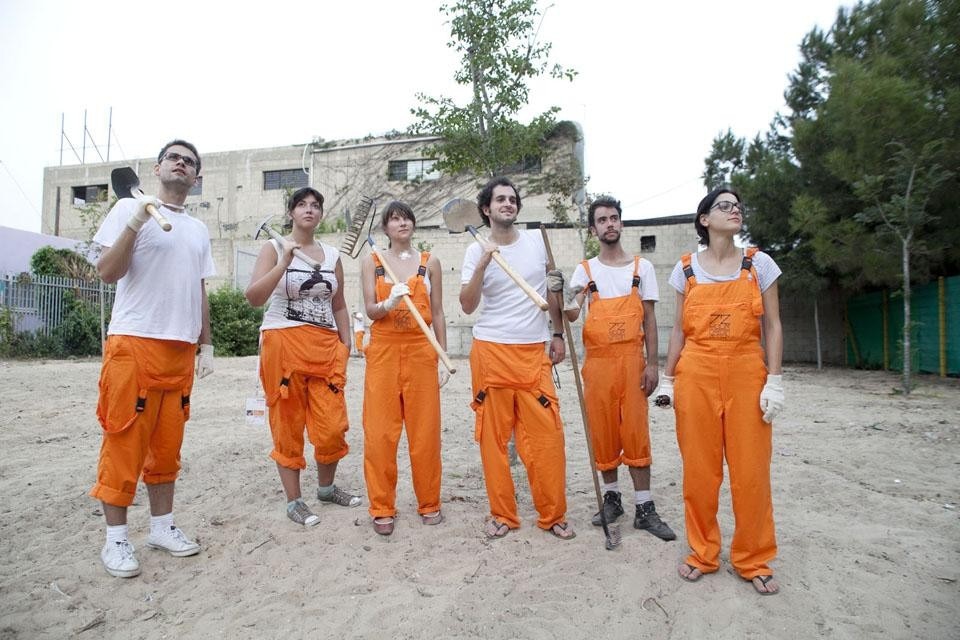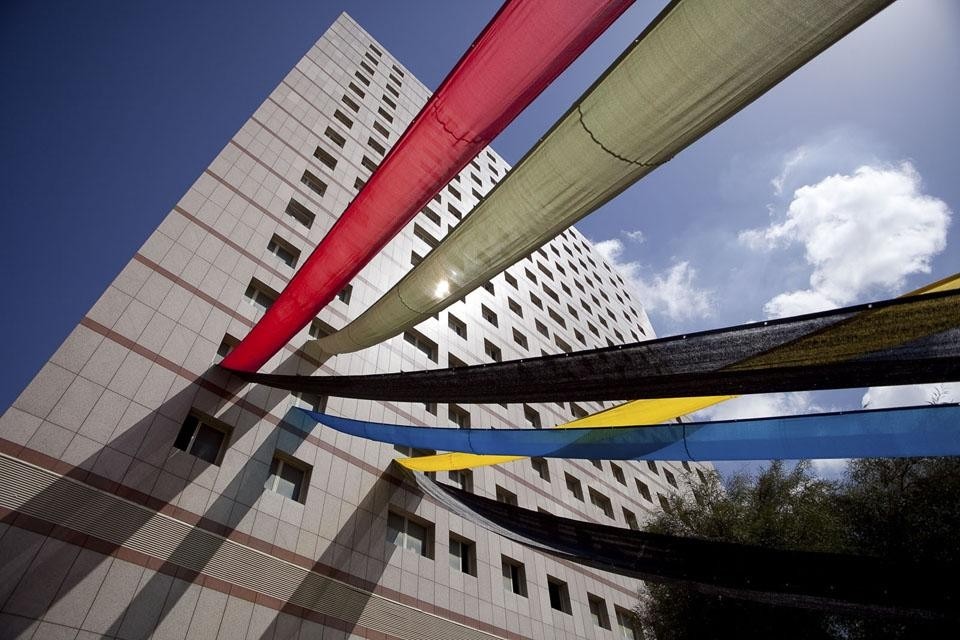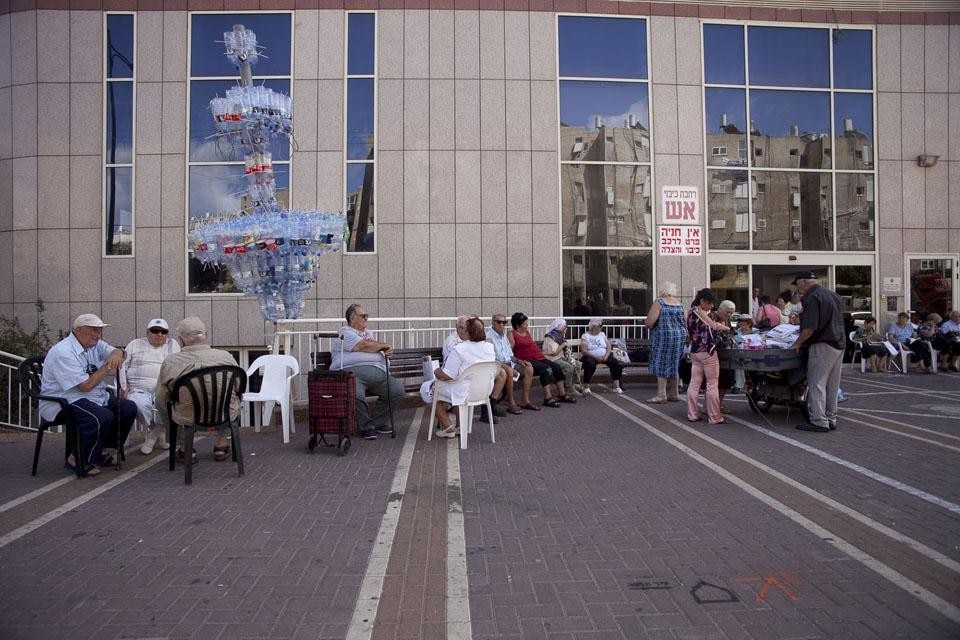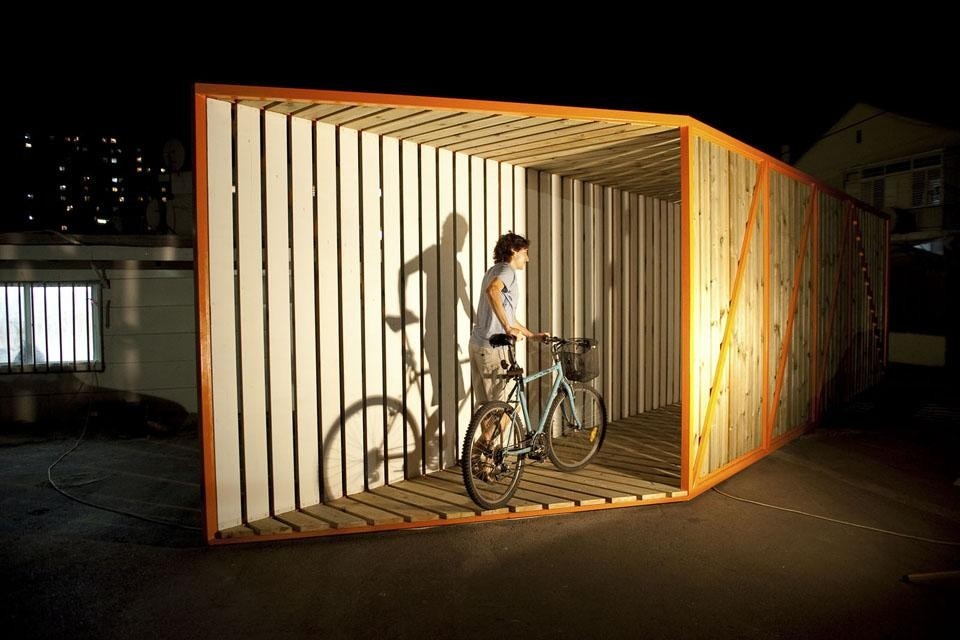After analyzing the site, mapping movement patterns, current uses, physical qualities and urban context ten sites are chosen along the street with the most potential for intervention. This, they say, is a platform for experimentation, to test ideas and methodologies. Up until now, 30% of the projects built during 72HUA remained. This involved feedback from the residents during the course of the design and building process what the organizers call, a "Real-Time Architecture". Discovering pockets of freedom and even anarchy within the municipal system enables the 72HUA project to spell an architectural vocabulary for non-architects—giving the residents words and tangible projects to refer to.
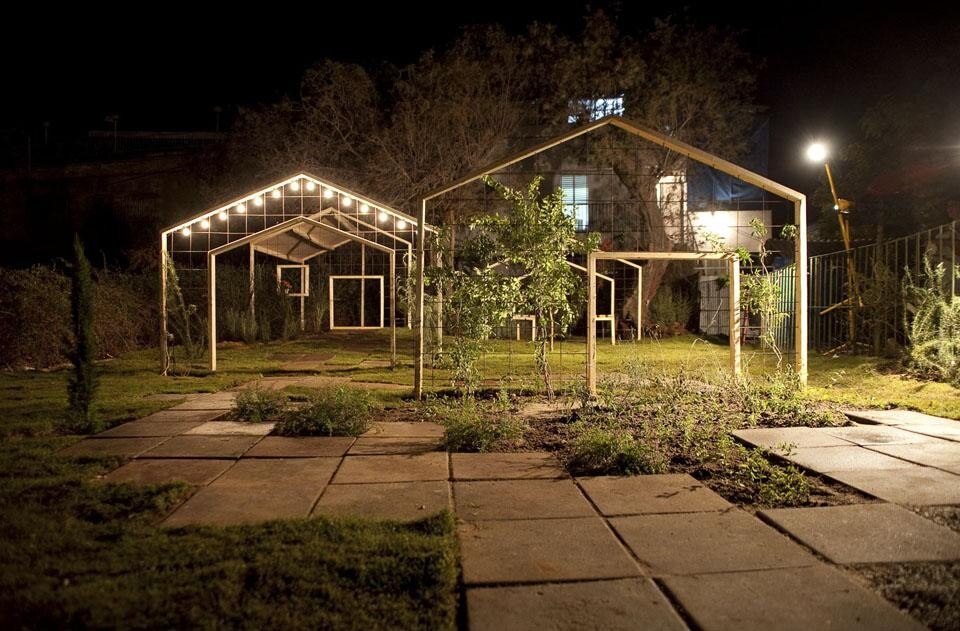
How would you describe the 72HUA?
Kerem Halbrecht + Gilly Karjevsky: 72 Hour Urban Action is the world's first real-time architecture competition. With three days and three nights to design and build projects in the public space, participants from around the world are divided into ten teams with ten different missions all on one street. By channeling people's passion and enthusiasm, it is possible to achieve a huge amount of work—120 people, each giving 72 hours, this makes 8,640 hours of professional work donated. Everybody gains; the residents, the municipality, the participants. Architecture can be fun.
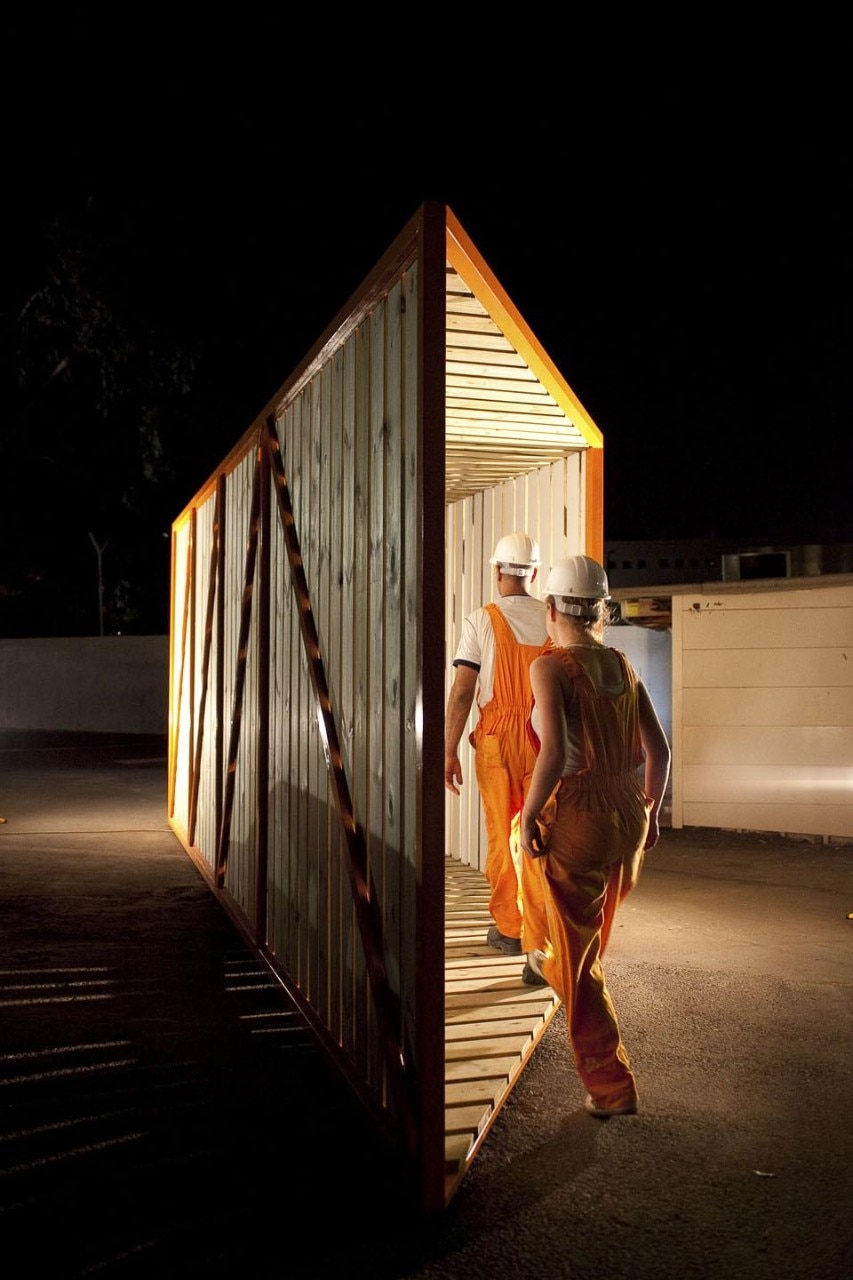
The basic question for us was—can we bring immediacy of action into the realms of architecture and planning? Usually this takes a huge amount of time, needs loads of money and loads of permissions—it then seems like it is impossible to change anything. We wanted to show that change is possible, to inspire people to engage more closely with their surroundings and to challenge accepted ideas around the ownership of public space: who has the right to intervene in public space? Whose responsibility is it? Can we change the preconceptions about these rights and responsibilities? The 72HUA project was born in Israel, into a culture in perpetual crisis, which prompts a lot of questions for people living there—how do you lead a happy life when you are faced with a situation that seems unsolvable? When terrible things are done in your name? How do you deal personally with life in an ever-present conflict? You can choose to be apathetic and ignore the problems as far as possible, you can become an activist and rebel, you can become aggressive towards those different from you, or as this project suggests: you can create the reality you want to live in.
In getting people to actively engage with local government, it is possible to begin to effect political change—participating in thinking about change and taking action in public space has political meaning in the sense that it reminds people that governments are there for society and are accountable to it.
The 72HUA project was born in Israel, into a culture in perpetual crisis, which prompts a lot of questions—how do you lead a happy life when you are faced with a situation that seems unsolvable? When terrible things are done in your name?
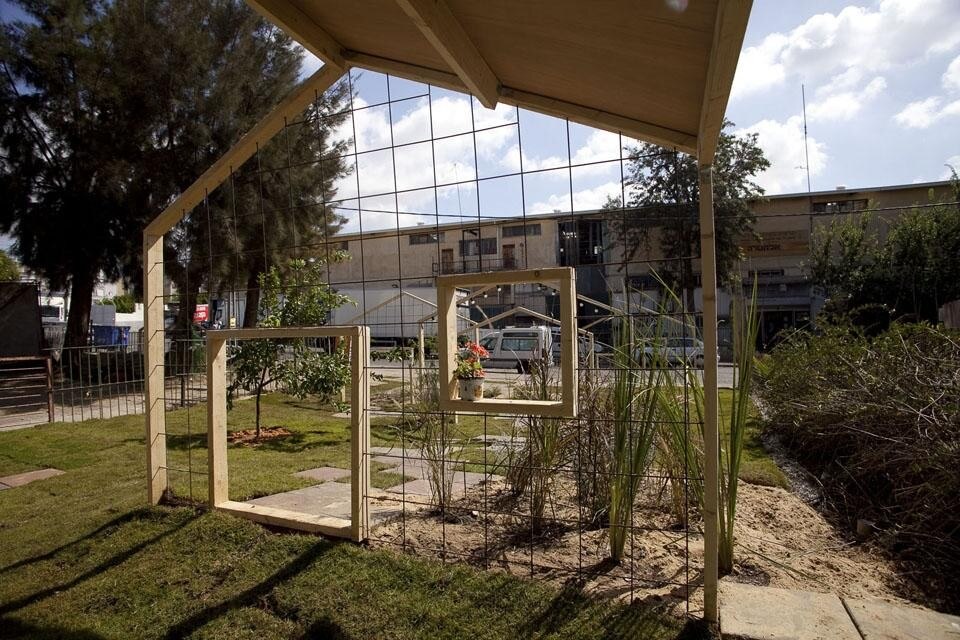
The first 72HUA event took place at the Bat Yam Biennale of Landscape Urbanism, in the south of Tel Aviv, on September 2010. It had 120 participants from 20 countries. Bat Yam functions as a suburb of Tel Aviv-Jaffa. It has the image of being a dull, violence-ridden city with low quality public spaces—an image the current mayor is determined to change. Its populations amounts to 160,000 people, and it is the second densest city in Israel. 30% of the city's inhabitants are immigrants from the former USSR and 10% of the city's area is open public spaces. The city sits on the Mediterranean shore—it is spread along the coast, with residents living, on average 1100m from the beach.
The Mayor's idea to make the city into an open-air laboratory for urban design to improve the quality of public spaces, made it possible for us to work. As we ran the project under an event permit rather than a building permit, this removed most rules. Still there were two major ones—no digging below 30cm (because of infrastructure in the ground) and no going over and working on the road. The projects that remained after the competition got building permits retrospectively. In the period between the end of the project and the municipality taking over, some projects were taken care of by residents.
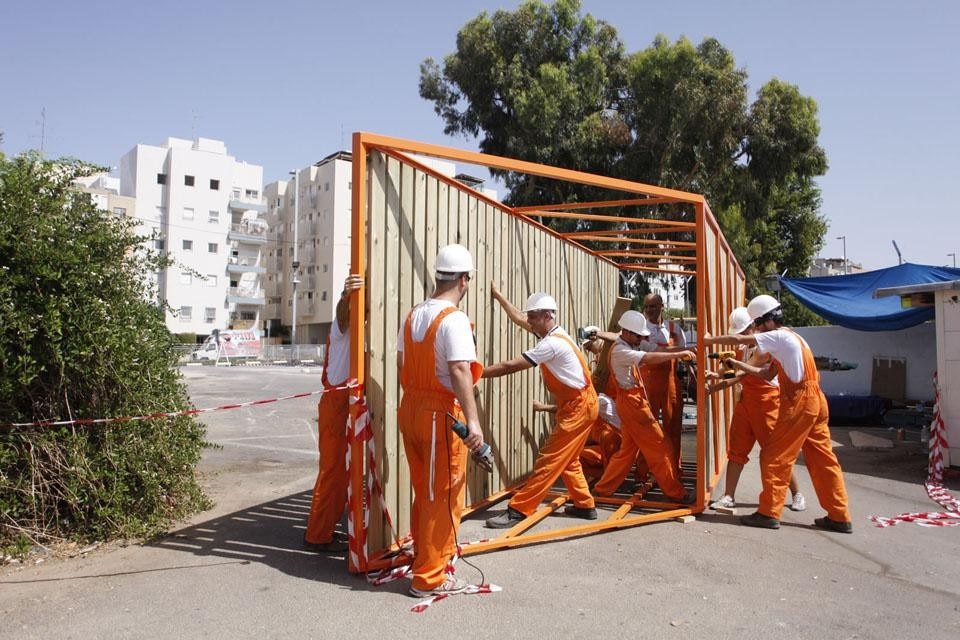
The camp was a primary school was transformed into a live-work camp for the competition. The school was empty because the kids were on holiday and each team got a classroom, and we brought beds from the civil defense disaster relief warehouses. From intimate relationships between participants, and between them and the site and neighborhood, to precise design and execution, the structure of the camp enabled to produce almost every idea the teams came up with.
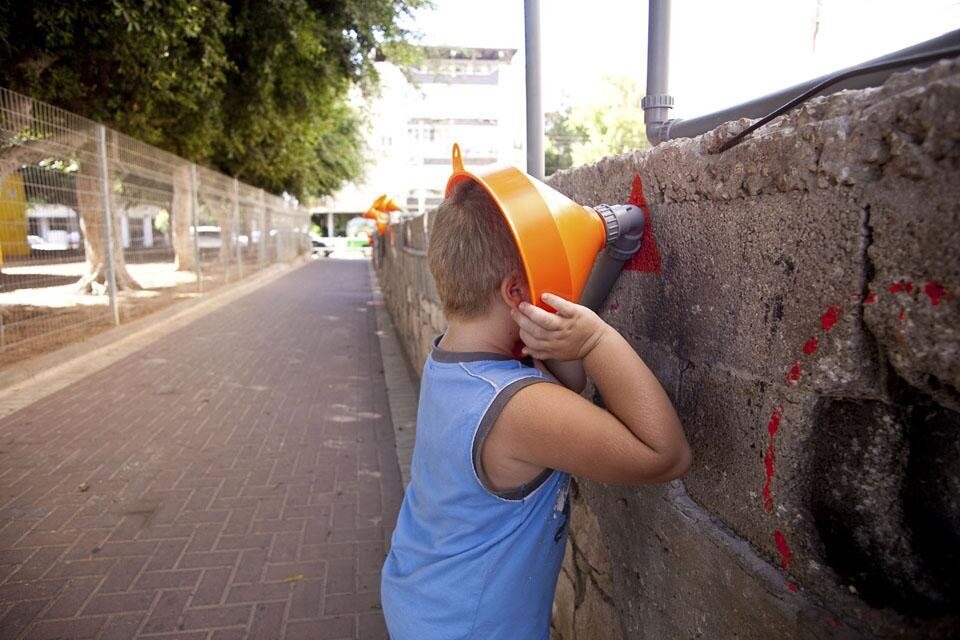
Internationally we collaborate with local partners to research, fund and produce the event in more cities around the world. Most of these local partners are people and organizations that took part in the event before. As the number of 72HUA projects grows and spreads to different parts of the world there will be an increasing number of opportunities for cross-cultural exchange: for the participants themselves; between professionals and students from the countries in which the 72HUA takes place; and also for the residents and municipalities of the relevant cities. This will bring a change in perception on how to work in the public space—for professionals, government, residents, ourselves. Another thing is the development of an international network of professionals based on practice—this is not a conference among peers, but rather a building site for architecture and society.
